Nov. 14, 2018
Prelims Pointers
Nov. 14, 2018

Geography:
- Location: It is Located on the Indo-Nepal border in the district Lakhimpur-Kheri in Uttar Pradesh.
- Rivers: The Sharda River flows by the Kishanpur WL Sanctuary, the Geruwa River flows through the Katerniaghat WL Sanctuary and the Suheli and Mohana streams flow in the Dudhwa National Park, all of which are tributaries of the mighty Ghagra River.
- Vegetation: The vegetation is of the North Indian Moist Deciduous type, containing some of the finest examples of Sal forests (Shorea robusta) in India.
Composition:
- Dudhwa Tiger Reserve (DTR) comprises Dudhwa National Park (DNP) and Kishanpur and Katarniaghat wildlife sanctuaries.
- Kishanpur, the oldest of the three Protected Areas, was declared a Wildlife Sanctuary in 1972, followed by Katerniaghat in 1975 and finally Dudhwa National Park in 1977.
- Though the 3 PAs are physically separate, each consists of unbroken tracts of dense forests.
Tharus:
- This season, the sanctuary authorities have formulated a plan to promote Tharu village tours to get a glimpse of the Tharu culture and customs.
- Tharus are the natives of Dudhwa jungles. They claim to have their origin from Thar in Rajasthan.
Prelims Pointers
Nov. 14, 2018

About:
- The Union Home Ministry has increased interactions with social media platforms to arrest the spread of rumours inciting unrest and other activities detrimental to national security.
- to Home Ministry, Twitter had complied with the requests of the law enforcement agencies in taking down objectionable or hateful content only in 60% cases.
- It warned that said strict legal provisions will be invoked in case the social media platform did not comply with the request of the authorities to promptly remove objectionable content.
- Debate:
- to officials, if someone is verbally abused on the road, action is taken against that person under criminal laws, why should it be different in the virtual world.
- However, according to twitter representatives, If the identity of anonymous accounts criticising the government’s policies are provided to the government agencies then it defeats the purpose of freedom of expression.
- to officials, if someone is verbally abused on the road, action is taken against that person under criminal laws, why should it be different in the virtual world.
Prelims Pointers
Nov. 14, 2018

About:
- Mandate:
- To act as a high-level advisory body to several ministries and execute mission-oriented programmes.
- To render advice on all matters related to Science, Technology and Innovation and monitors the implementation of the Prime Minister’s vision on these issues.
- To act as a high-level advisory body to several ministries and execute mission-oriented programmes.
- Composition: The 9-member PM-STIAC is headed by Government of India’s Principal Scientific Adviser to (K. Vijay Raghavan). Other 8 members are –
- K. Saraswat, former chief of DRDO;
- S. Kiran Kumar, former Chairman of ISRO;
- Manjul Bhargava, Professor, Princeton University;
- Baba Kalyani, MD, Bharat Forge (the lone member from industry);
- Ajay Kumar Sood, Professor, Indian Institute of Science, Bengaluru;
- Madhuri Kanitkar, Dean, Armed Forces Medical College, Pune;
- Sanghamitra Bandopadhyay, Director, Indian Statistical Institute, Kolkata and
- Subhash Kak, Professor, Oklahoma State University.
- K. Saraswat, former chief of DRDO;
- Special Invitees: Secretaries of various scientific Ministries such as education, environment and health would be ‘special invitees’ to the council meetings.
Prelims Pointers
Nov. 14, 2018

About:
- The IWTCS is a consolidation of relevant National and International Standards (IS/IEC/IEEE), Technical Regulations and requirements issued by Central Electricity Authority (CEA), guidelines issued by MNRE and other international guidelines.
- The IWTCS is envisaged to assist the following stakeholders –
- Original Equipment Manufacturers (OEMs)
- End Users -Utilities, SNAs, Developers, IPPs, Owners, Authorities, Investors and Insurers
- Certification Bodies and
- Testing Laboratories
- Original Equipment Manufacturers (OEMs)
- The draft Scheme enlists the guidelines for the benefit of all the stakeholders from concept to lifetime of wind turbine, including Indian Type Approved Model (ITAM), Indian Type Certification Scheme (ITCS), Wind Farm Project Certification Scheme (WFPCS) and Wind Turbine Safety & Performance Certification Scheme (WTSPCS).
|
· National Institute of Wind Energy (NIWE) has been established in Chennai in the year 1998, as an autonomous R&D institution by the Union Ministry of New and Renewable Energy (MNRE). · It is a knowledge-based institution for carrying out further research in the wind energy sector. |
Prelims Pointers
Nov. 14, 2018
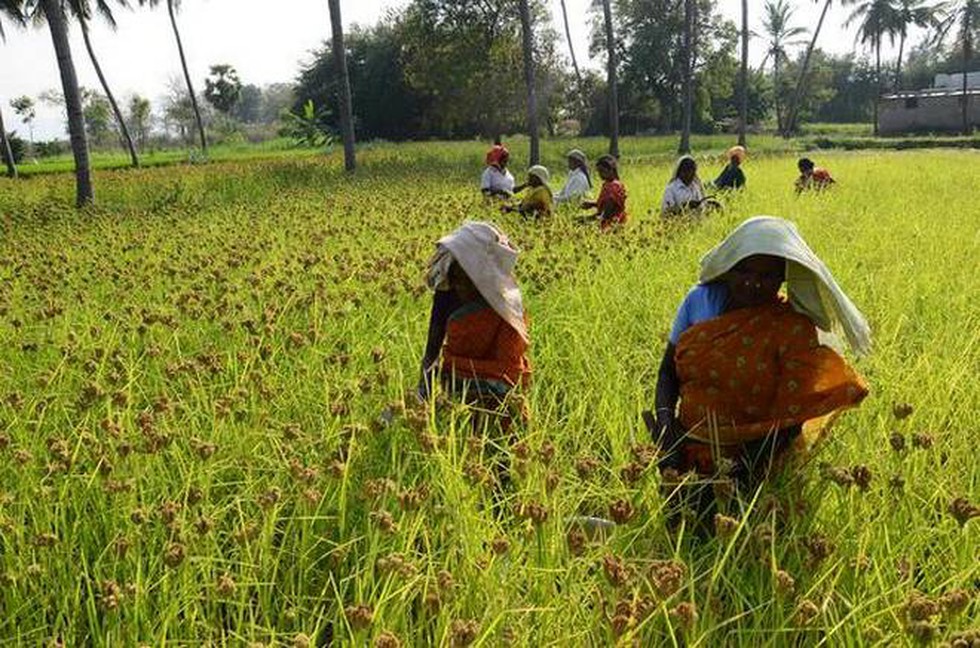
About:
- According to a recent concept note released, the proposed Ease of Doing Agri-Business Index will rank the States on the basis of reforms in agri-business as well as their investment in agriculture, increased productivity, reduction of input costs, and risk mitigation measures.
- Parameters:
|
Parameter |
Weightage of parameter in scoring system |
|
Marketing reforms |
25% |
|
Governance and land reforms |
20% |
|
success in reducing the cost of farm inputs by distributing soil health cards and encouraging organic farming and micro-irrigation |
20% |
|
Risk mitigation measures such as crop and livestock insurance |
15% |
|
increased productivity |
10% |
|
investment in agriculture |
10% |
|
Note: The parameters are process-oriented, and are meant to evolve as and when new reforms or initiatives are proposed, says the concept note. |
|
- High-performing States on the index will be rewarded by Union Government in the form of receiving extra funding for the Agriculture Ministry’s flagship schemes.
|
Do you know? NITI Aayog already brings out an Agricultural Marketing and Farm Friendly Reforms Index, rating States on their implementation of such reforms. In the initial edition of that Index in 2016, Maharashtra stood first in the rankings, followed by Gujarat. |
Prelims Pointers
Nov. 14, 2018
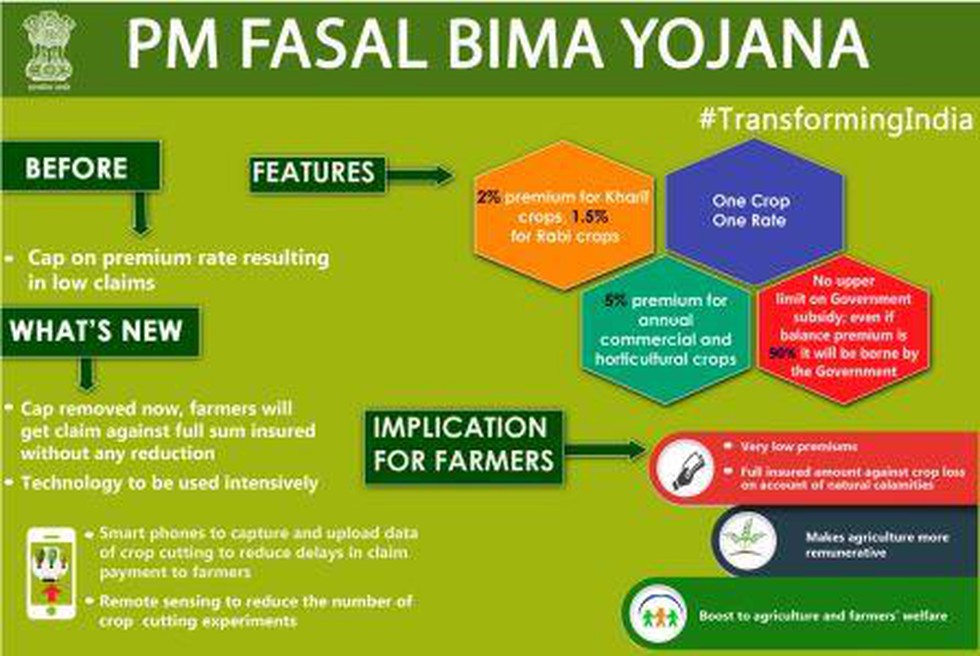
About:
- The Pradhan Mantri Fasal Bima Yojna (PMFBY) was launched in 2016 to provide a comprehensive insurance cover against failure of the crop thus helping in stabilising the income of the farmers.
- The Scheme covers all Food & Oilseeds crops and Annual Commercial/Horticultural Crops for which past yield data is available and for which requisite number of Crop Cutting Experiments (CCEs) are being conducted under General Crop Estimation Survey (GCES).
- The scheme is being administered by Ministry of Agriculture and is implemented by empanelled general insurance companies.
New Operational Guidelines:
In September 2018, Union Government issued new operational guidelines for implementation of PMFBY –
- Performance evaluation of insurance companies has been made stringent. States and Insurance Companies to be penalised for the delay in settlement of insurance claims under PMFBY.
- Perennial horticultural crops included under the ambit of PMFBY on a pilot basis.
- Add on coverage for crop loss due to attack of wild animals, will be implemented on a pilot basis.
- Aadhaar number will be mandatorily captured to avoid duplication of beneficiaries.
- To insure more non-loanee farmers under the scheme, the insurance companies are given a target of enrolling 10% more non-loanee farmers than the previous corresponding season.
- The insurance companies will have to mandatorily spend 0.5% of gross premium per company per season for publicity and awareness of the scheme.
- Rationalization of premium release process has been incorporated in the new guidelines. As per this, the insurance companies need not provide any projections for the advance subsidy.
Prelims Pointers
Nov. 14, 2018

Credit ratings:
- Credit ratings are assigned to debt instruments (not to equity instrument) by a Credit Rating agency (CRA).
- Rating is denoted by a simple alphanumeric symbol, for e.g. AA+, A-, etc.
- Rating indicates that whether the issuer company can repay its debt obligation in full and on time.
- Credit rating serves 2 main purpose:
- Borrowing cost: It Influences the borrowing cost of country in international market.
- Investment: Credit rating Influences foreign investors decision to invest I.E. by seeing this, the investor decides whether to buy, hold, or sell a debt instrument.
- Borrowing cost: It Influences the borrowing cost of country in international market.
Credit rating agencies (CRAs):
- A credit rating agency is an entity which assesses the ability and willingness of the issuer company for timely payment of interest and principal on a debt instrument.
Credit rating agencies are regulated by SEBI under the SEBI (Credit Rating Agencies) Regulations, 1999.
- Some of the Global CRAs are: Fitch, Moody, S&P.
- Some of the Indian CRAs are: Credit Analysis & Research Ltd. (CARE), Credit rating information services of India (CRISIL), Investment and credit rating agencies (ICRA) etc.
News Norms:
- CRAs should disclose parameters such as liquid investments or cash balances, access to any unutilised credit lines and adequacy of cash flows in a specific section on liquidity.
- For reviewing rating criteria, SEBI has directed rating agencies, to assess inter-linkages of holding company and subsidiaries, holding company’s liquidity, financial flexibility and support to the subsidiaries.
Prelims Pointers
Nov. 14, 2018

About:
- Hunar Haat is being organised across the country by the Ministry of Minority Affairs under a mission to provide market and opportunity to master artisans and craftsmen.
- Earlier, Hunar Haat had been organised at Allahabad (Sept, 2018), at Pragati Maidan (2016, 2017) and Baba Kharak Singh Marg (2017, 2018) New Delhi; at Puducherry (2017, 2018) and at Mumbai (2017).
- During the last one year, Hunar Haat has been successful in providing employment and marketing opportunities to more than 1 lakh 50 thousand artisans and associated people.
- Ministry of Minority Affairs is also working to establish “Hunar Hub” across the country to provide a platform to master artisans and craftsmen to display as well sell their products.
Prelims Pointers
Nov. 14, 2018

About:
- ARPIT is an online certificate course for professional development of 15 lakh higher education faculty using the MOOCs platform SWAYAM.
- Salient features:
- The course is a 40-hour module with 20 hours of video content and 20 hours of non-video content. At the end of the course, an exam will be conducted for assessment.
- Faculties who successfully completed the online refresher course will be certified.
- All in-service teachers, irrespective of their subject and seniority are eligible to complete these refresher courses which will help them in career advancement.
- The training materials will be uploaded and made available through SWAYAM.
- The course is a 40-hour module with 20 hours of video content and 20 hours of non-video content. At the end of the course, an exam will be conducted for assessment.
- Duration:
- ARPIT will be conducted for three months every year. will be an ongoing exercise so that every year NRCs will continuously develop new refresher module.
- In the first phase, the courses will remain open from 1st November, 2018 to 28th February, 2019.
- ARPIT will be conducted for three months every year. will be an ongoing exercise so that every year NRCs will continuously develop new refresher module.
- National Resource Centres (NRCs):
- 75 discipline-specific institutions have been notified as National Resource Centres (NRCs) in the first phase, which will prepare online training material. It will also publish the list of the faculty who have been certified.
- NRCs are located in a mixed range of institutions such as, Central Universities, IISc, IUCAA, IITs, IISERs, NITs etc.
- 75 discipline-specific institutions have been notified as National Resource Centres (NRCs) in the first phase, which will prepare online training material. It will also publish the list of the faculty who have been certified.
Prelims Pointers
Nov. 14, 2018

About:
- Objective: To prepare second tier academic heads who are potentially likely to assume leadership roles in the future.
- Salient Features:
- It is a Flagship leadership development training programme for second level academic functionaries in public funded higher education institutions.
- The programme would provide senior faculty, with high academic credentials, the required leadership and managerial skills including handling stress, team building work, financial & general administration.
- It is of 3 weeks duration (2 weeks domestic and one-week foreign training).
- It is a Flagship leadership development training programme for second level academic functionaries in public funded higher education institutions.
- Implementing agencies:
- The implementation of LEAP Programme will be through 15 NIRF top ranked Indian Institutions namely, IIT Roorkee; IIT Kanpur etc.
- The foreign Universities identified for the training are also within the top 100 in the world global rankings.
- The implementation of LEAP Programme will be through 15 NIRF top ranked Indian Institutions namely, IIT Roorkee; IIT Kanpur etc.
Nov. 13, 2018
Prelims Pointers
Nov. 13, 2018

About:
- Hegganahalli Narayan Ananth Kumar (1959 – 2018) was an Indian politician of the Bharatiya Janata Party (BJP).
- He was a member of the Parliament for over two decades, having been elected to the Lok Sabha from Bengaluru South, from 1996 till his death.
- He served as the Union Minister of Chemicals and Fertilizers and Parliamentary Affairs from 2014 till his death in 2018.
Prelims Pointers
Nov. 13, 2018

Wellcome Trust:
- The Wellcome Trust is an independent charity funding research to improve human and animal health.
- Established in 1936 and with an endowment of around £15 billion, it is the largest non-governmental source of funds for biomedical research in the United Kingdom.
DBT/Wellcome Trust India Alliance:
- Recently, The Department of Biotechnology (DBT) under the Ministry of Science and Technology, in collaboration with the Wellcome Trust, UK, celebrated 10 years of their joint partnership.
- The aim of the programme is to help India in becoming a leader in key areas of life sciences and biomedical research.
- The current programme is being delivered by a Special Purpose Vehicle (SPV), a public trust registered as the DBT/Wellcome Trust India Alliance.
- The Trust receives equal contribution from both DBT and WT for the running the fellowship grant scheme.
- In the past 10 years, the alliance has awarded 320 fellowships to researchers in 93 institutions from India in various areas of biomedical research (human and veterinary).
- The Trust receives equal contribution from both DBT and WT for the running the fellowship grant scheme.
Prelims Pointers
Nov. 13, 2018

Global Cooling Prize:
- Duration: It is an international competition which will run over the course of the two-year.
- Objective: To incentivize the development of a residential cooling technology that will have at least five times less climate impact than the standard Room Air Conditioning (RAC).
- Agencies involved:
- The prize is supported by Mission Innovation, the Government of India through the Department of Science and Technology and its partner organizations namely Ministry of Power, Bureau of Energy Efficiency, and Ministry of Environment.
- It will be administered by a coalition of leading research institutes—Rocky Mountain Institute (RMI), Conservation X Labs and CEPT University – which will support mass adoption of the breakthrough technology around the world, starting from India.
- The prize is supported by Mission Innovation, the Government of India through the Department of Science and Technology and its partner organizations namely Ministry of Power, Bureau of Energy Efficiency, and Ministry of Environment.
- Prize money:
- Over US$3 million will be awarded in prize money over the course of the two-year competition. The winning technology will be awarded at least US$1 million.
- Up to 10 short-listed competing technologies will be awarded up to US$200,000 each
- Over US$3 million will be awarded in prize money over the course of the two-year competition. The winning technology will be awarded at least US$1 million.
Significance:
- There are currently 1.2 billion Room Air Conditioning (RAC) units in service around the world, which will increase to at least 4.5 billion by 2050. India alone will see over 1 billion air conditioning deployed in the market by 2050.
- The energy consumption associated with comfort cooling represents one of the largest end-use risks to the climate, putting the most vulnerable populations at risk.
- It is believed that a winning technology of the global cooling prize could prevent up to 100 gigatons (GT) of CO2-equivalent emissions by 2050.
Prelims Pointers
Nov. 13, 2018

Recent MoU:
- Abu Dhabi National Oil Company (ADNOC) has signed a MoU with the Indian Strategic Petroleum Reserves Ltd. (ISPRL) to explore the possibility of storing ADNOC crude oil at ISPRL’s underground oil storage facility at Padur in Karnataka, which has a 2.5 million-tonne capacity.
- The MoU follows the arrival of the final shipment of the initial delivery of ADNOC crude on November 4, to be stored in another ISPRL underground facility in Mangaluru.
India and UAE Hydrocarbon linkages:
- Abu Dhabi National Oil Company (ADNOC):
- ADNOC is the only foreign oil and gas company, so far, to invest, by way of crude oil, in India’s strategic petroleum reserves program.
- It is also a stakeholder, along with Saudi Aramco, in one of India’s largest refinery to be constructed at Ratnagiri in Maharashtra.
- ADNOC is the only foreign oil and gas company, so far, to invest, by way of crude oil, in India’s strategic petroleum reserves program.
- The hydrocarbon linkages between the two were bolstered in February 2018, when an Indian consortium of three companies (ONGC Videsh, IOCL, and Bharat PetroResources Ltd.), was awarded a 10% participating interest in Abu Dhabi’s offshore Lower Zakum concession.
List of Indian strategic petroleum reserves?
· ISPRL has already built 5.33 million tons of underground storage capacity at three locations, Visakhapatnam (1.33 million tons), Mangalore (1.5 million tons) and Padur (2.5 million tons), that can meet around 10 days of the country’s oil needs.
· In June 2018, the Government of India, announced the creation of 2 new storage facility at Chandikhol (4-million-tons), in Odisha, and an additional facility at Padur (2.5-million-tons).
· The existing and newly announced strategic reserve facilities put together will provide around 21 days of emergency coverage for India’s crude oil requirements.
Prelims Pointers
Nov. 13, 2018

Salient features of Act:
- It declares 20 existing Indian Institutes of Management (IIMs) as institutions of national importance.
- It grants greater administrative, academic and financial autonomy to the IIMs. The government will have no say on the appointments or fees at these institutes. There will be only a periodic, independent review of the IIMs.
- It allows them to award degrees to their graduates. Until now, since they haven’t been governed by an act of Parliament nor overseen by the University Grants Commission (UGC), IIMs have been awarding students post-graduate diplomas.
- A coordination forum will be set up, which will include representation from the 20 IIMs. It will discuss matters of common interest to all IIMs and will work as an advisory body.
- The Board of Governors will be the executive body of each IIM, comprising upto 19 members.
- It will nominate 17 board members including eminent persons, faculty members and alumni. The remaining two members will be nominees from the central and state governments, respectively.
- The Board appoints its own Chairperson.
- The Board of Governors will appoint the Director of each IIM.
- It will nominate 17 board members including eminent persons, faculty members and alumni. The remaining two members will be nominees from the central and state governments, respectively.
Recent Development:
- The Central government has approved the process of constitution of new Boards for Governors for the Indian Institute of Management (IIMs) as per the Section 10 of the IIM Act 2017.
- In accordance with the Act, the central government has decided to immediately withdraw the government nominees who are in excess of the provisions of the Act, which will pave way for complete control of the institutions by reputed academicians and alumni.
- This process is expected to be completed before December 15, 2018. It is a major development which signals complete autonomy of IIMs.
Prelims Pointers
Nov. 13, 2018

About:
- The Paris Peace Forum is an international summit founded in 2018. It will be an annual event.
- Every year, it will be attended by representatives from Nations, international organizations civil society for the purpose of promoting peace.
- The initiative taken by the French government is to serve as a painful reminder of the two world wars and the current threats to peace and harmony in the current world.
- Key highlights:
- The 2018 summit is being attended by 70 global leaders to look at the challenges to the multilateralism from growing protectionism.
- In a veiled dig at Donald Trump's America-first policies and scepticism toward multilateralism, German Chancellor Angela Merkel warned that "lack of communication and unwillingness to compromise" can have deadly consequences.
- UN Secretary-General Antonio Guterres also warned of "parallels" between the present day and the unstable and dangerous 1930s.
- The 2018 summit is being attended by 70 global leaders to look at the challenges to the multilateralism from growing protectionism.
|
The Paris Peace Conference 1919 was the meeting of the victorious Allied Powers following the end of World War I to set the peace terms for the defeated Central Powers. The main result was the Treaty of Versailles. |
Prelims Pointers
Nov. 13, 2018

About:
- Samudra Shakti is a Bilateral Naval Exercise between Navies of India and Indonesia. It is scheduled from 12 to 18 Nov 18.
- The aim of the exercise is to strengthen bilateral relations, expand maritime co-operation, enhance interoperability and exchange best practices.
- The strategic partnership between India and Indonesia was elevated to ‘Comprehensive Strategic Partnership’ during the visit of Prime Minister of India in May 2018 and Defence co-operation has been a significant pillar in this partnership.
Prelims Pointers
Nov. 13, 2018
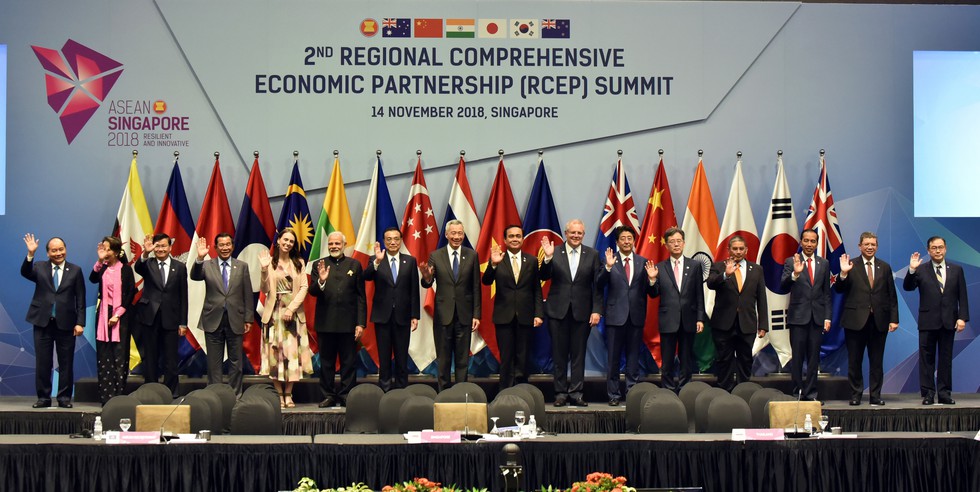
About:
- Members: RCEP is a proposed free trade agreement (FTA) between 10 ASEAN countries and their six FTA partners, namely Australia, China, India, Japan, Korea and New Zealand.
- Objective: RCEP is a pact that aims to cover goods, services, investments, economic and technical cooperation, competition and intellectual property rights.
- India and RCEP: RCEP countries account for almost 27% of India’s total trade. Exports to RCEP account for about 15% of India’s total exports and imports from RCEP comprise 35% of India’s total imports.
Prelims Pointers
Nov. 13, 2018
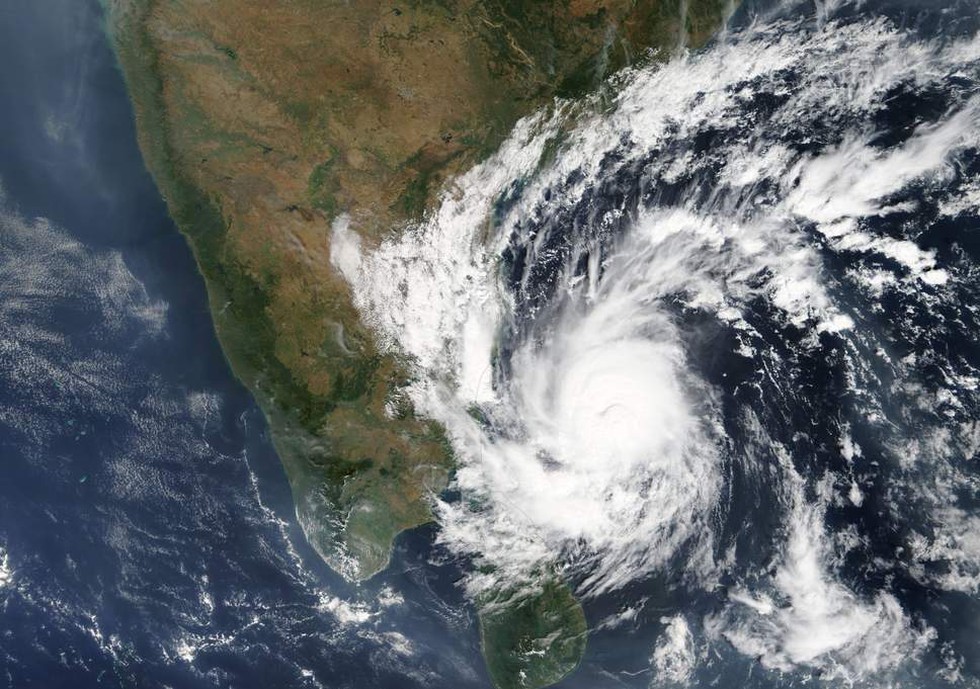
About:
- Cyclones are known as typhoons in the China Sea and Pacific Ocean; hurricanes in the Caribbean Sea and Atlantic Ocean; tornados in the Guinea lands of West Africa and southern USA; willy-willies in north-western Australia and tropical cyclones in the Indian Ocean.
- Cyclones are caused by atmospheric disturbances around a low-pressure area distinguished by swift and often destructive air circulation. Cyclones are usually accompanied by violent storms and bad weather.
- The air circulates inward in an anticlockwise direction in the Northern hemisphere and clockwise in the Southern hemisphere.
Types:
- Cyclones are classified as: (i) extra tropical cyclones; and (ii) tropical cyclones.
- to the World Meteorological Organisation (WMO), ‘Tropical Cyclone’ covers weather systems in which winds exceed ‘Gale Force’ (minimum of 34 knots or 63 kph).
- Extra tropical cyclones (also called temperate cyclones) occur in temperate zones and high latitude regions, though they are known to originate in the Polar Regions.
Prelims Pointers
Nov. 13, 2018

About:
- Dedicated to:
- Chhath is a Hindu festival dedicated to the Sun god and his wife Usha in order to thank them for bestowing the bounties of life on earth.
- The Goddess who is worshipped during the famous Chhath Puja is known as Chhathi Maiya (also known as Usha, wife of the sun god).
- Chhath is a Hindu festival dedicated to the Sun god and his wife Usha in order to thank them for bestowing the bounties of life on earth.
- Meaning of word chhath: The word chhath means sixth and the festival is celebrated on the sixth day of the month Kartika of the Hindu lunar Bikram Sambat calendar.
- Rituals:
- The festival is observed over a period of four days.
- They rituals include holy bathing, fasting, standing in water for long periods of time, and offering prayers and food to the setting and rising sun.
- The festival is observed over a period of four days.
- Regions:
- The festival is observed most elaborately in Mithila Province of Nepal, Terai-Madhesh region of Nepal, Indian states of Bihar, Jharkhand and UP.
- It is also more prevalent in areas where migrants from those areas have a presence.
- The festival is observed most elaborately in Mithila Province of Nepal, Terai-Madhesh region of Nepal, Indian states of Bihar, Jharkhand and UP.
Nov. 12, 2018
Prelims Pointers
Nov. 12, 2018
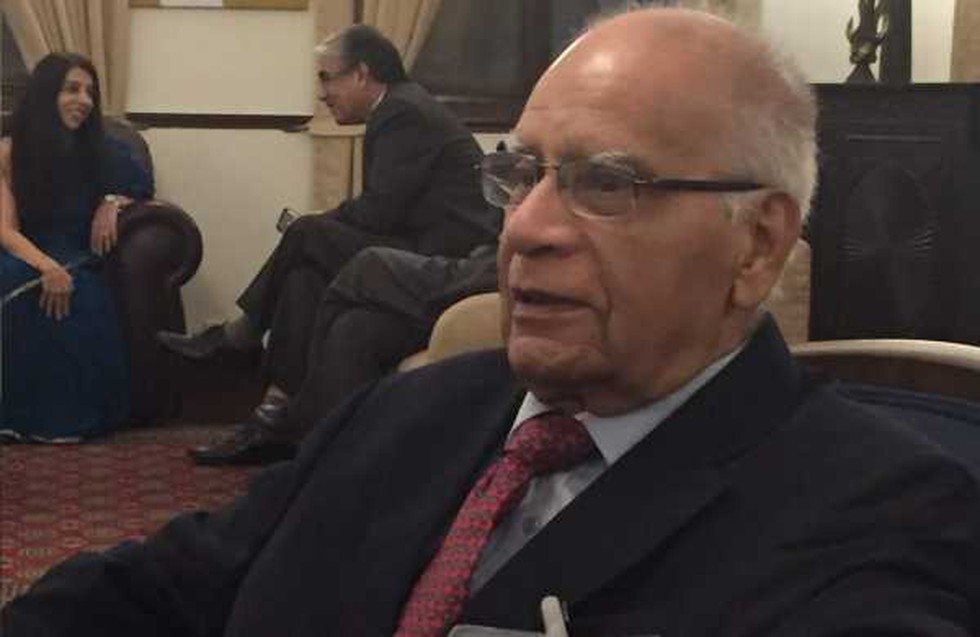
About:
- N. Srinivasan (1933-2018) was an Indian economist.
- Career:
- Over the past four decades, he has taught at numerous academic institutions, including MIT, Stanford University, and the Indian Statistical Institute. He was most recently the Emeritus Samuel C. Park, Jr. Professor of Economics at Yale University.
- He was a special adviser to the Development Research Center at the World Bank from 1977 to 1980.
- He was founding co-editor of the Journal of Development Economics.
- Over the past four decades, he has taught at numerous academic institutions, including MIT, Stanford University, and the Indian Statistical Institute. He was most recently the Emeritus Samuel C. Park, Jr. Professor of Economics at Yale University.
- Awards: In 2007, he was awarded Padma Bhushan for his contributions in the fields of economic growth and development economics, and international trade.
Prelims Pointers
Nov. 12, 2018

About 1I/2017 U1:
- Oumuamua is the first known interstellar object to pass through the Solar System.
- Name: The Interstellar object 1I/2017 U1 has been named by the Pan-STARRS observatory team as 'Oumuamua’. The name is of Hawaiian origin and means “a messenger from afar arriving first.”
- Discovery: The object was discovered on Oct. 19, 2017 by the NASA-funded Pan-STARRS1 telescope. Initially assumed to be a comet, it was reclassified as an asteroid a week later, then the first of a new class of interstellar objects.
- Journey:
- Scientists don’t know which star system this object came from. 1I/2017 U1’s trajectory indicates it came from the general direction of the constellation Lyra.
- It is on an outbound trajectory. It will pass above Neptune’s orbit in 2022. As it leaves our solar system it is headed towards the constellation Pegasus.
- Scientists don’t know which star system this object came from. 1I/2017 U1’s trajectory indicates it came from the general direction of the constellation Lyra.
- Size and Shape: The object is believed to be at least a quarter-mile (400 meters) long and cigar-shaped, with a length roughly ten times longer than the width.
- Composition: It is similar to many asteroids found in our solar system – dense, possibly rocky or even metallic. The object’s surface is somewhat reddish due to effects of irradiation from cosmic rays over millions of years.
Significance
- First Detection: The discovery of interstellar object 1I/2017 U1 is the first detection of a celestial object in our solar system that originated from another solar system.
- Unique shape: The highly-elongated shape of the object itself looks very different than any asteroid or comet we’ve seen in our own solar system.
Prelims Pointers
Nov. 12, 2018
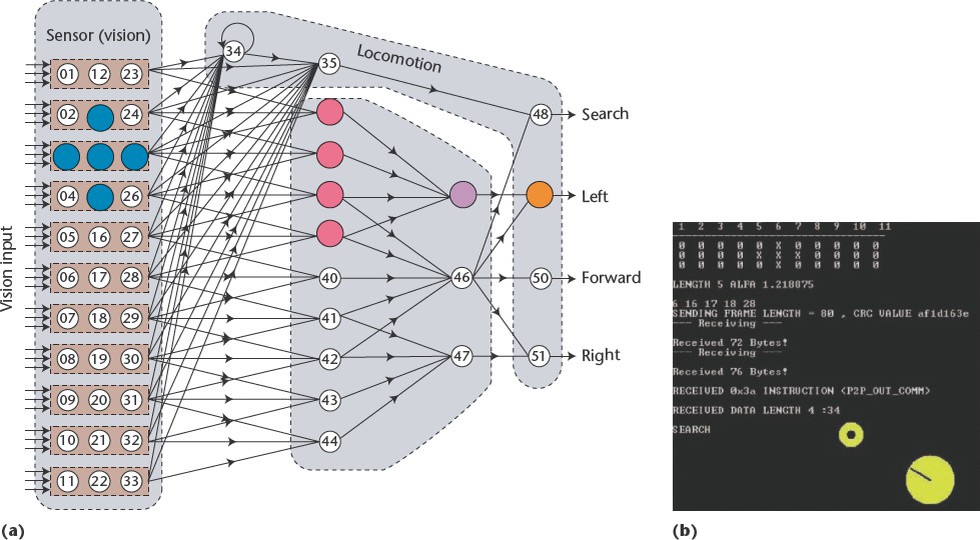
SpiNNaker:
- Spiking Neural Network Architecture (SpiNNaker) is a massive parallel computing platform designed to simulate the human brain.
- It uses 1 million ARM processors in a massively parallel computing platform based on Spiking Neural Networks (SNN).
- SpiNNaker machine is capable of completing more than 200 million actions per second, with each of its chips having 100 million transistors.
- It is designed by the researchers at University of Manchester.
Working:
- Biological neurons are basic brain cells present in the nervous system that communicate primarily by emitting ‘spikes’ of pure electro-chemical energy.
- Neuromorphic computing uses large scale computer systems containing electronic circuits to mimic these spikes in a machine.
- SpiNNaker is unique because, unlike traditional computers, it does not communicate by sending large amounts of information from point A to B via a standard network.
- Instead it mimics the massively parallel communication architecture of the brain, sending billions of small amounts of information simultaneously to thousands of different destinations.
Human Brain Project (HBP)?
- SpiNNaker is being used as one component of the neuromorphic computing platform for the Human Brain Project (HBP).
- The Human Brain Project (HBP) is a large ten-year scientific research project started in 2013.
- It is based on exascale supercomputers and aims to build a collaborative ICT-based infrastructure to allow researchers across Europe to advance knowledge in the fields of neuroscience, computing, and brain-related medicine.
- The project is largely funded by the European Union. The project coordination office is in Geneva, Switzerland.
Prelims Pointers
Nov. 12, 2018
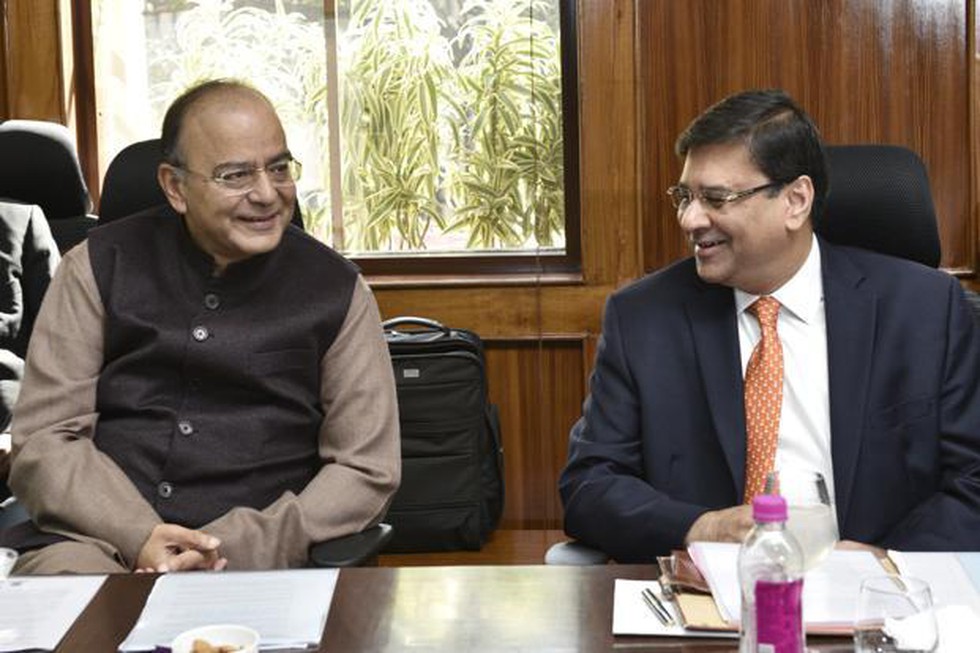
About:
- The Reserve Bank's affairs are governed by a central board of directors.
- Appointment procedure: The board is appointed by the Government of India in keeping with the Reserve Bank of India Act.
- Composition:
|
Official Directors |
· Full-time: Governor and not more than ‘four Deputy Governors’. · The Governor and Deputy Governors hold office for not more than ‘5 years’. |
|
Non-Official Directors
|
· Nominated by Government: ten Directors from various fields and two government Official. The ten directors hold office for ‘4 years’, and the govt. officials hold office as long as the government sees fit. · Others: Four Directors - one each from four local boards. |
- Mandate:
- The board members are not responsible for setting the interest rate, but will provide a broader guidance to the central bank.
- The Board is also to recommend to the government the design, form and material of bank notes and also when and where they can serve as legal tender.
- The board members are not responsible for setting the interest rate, but will provide a broader guidance to the central bank.
- Board meeting: key facts
- The Governor has to call a Board meeting at least 6 times in a year, and at least once each quarter. A meeting can be called if a minimum of four Directors ask the Governor to call a meeting.
- The Governor or, if for any reason unable to attend, the Deputy Governor authorised by the him to vote for him, presides the Board meetings.
- In the event of split votes, the Governor has a second, or deciding vote.
- The Governor has to call a Board meeting at least 6 times in a year, and at least once each quarter. A meeting can be called if a minimum of four Directors ask the Governor to call a meeting.
Recent developments:
- The RBI Board recently entered the news during the public spat between the central bank and the Finance Ministry.
- One of the issues was the government’s alleged threat of invoking Section 7 of the RBI Act which empowers the government to supersede the RBI Board and issue directions to the central bank if they are considered to be “necessary in public interest”.
Prelims Pointers
Nov. 12, 2018
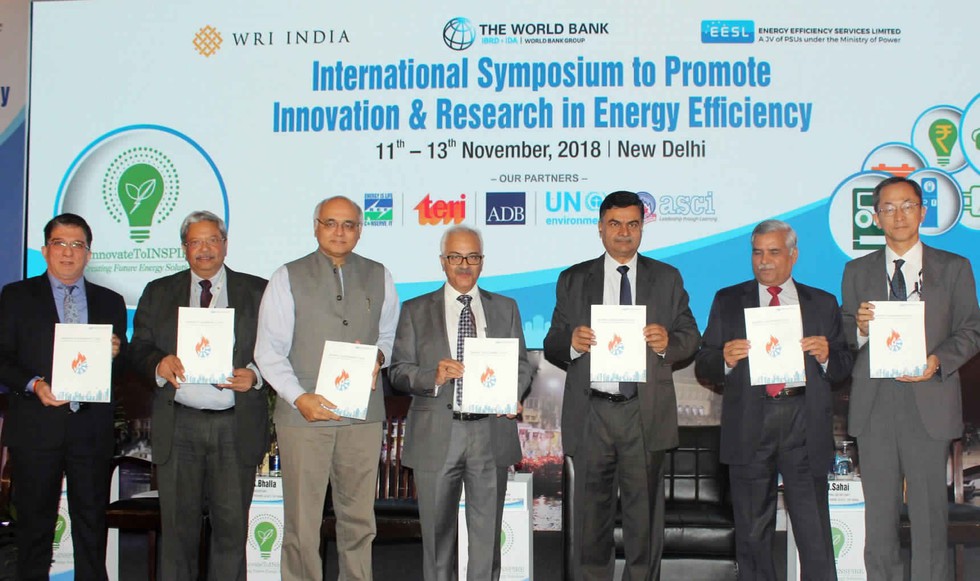
INSPIRE 2018:
- This is the second edition of INSPIRE and is being organised by Energy Efficiency Services Limited (EESL) and World Bank in collaboration with the Bureau of Energy Efficiency (BEE), The Energy & Resources Institute (TERI), Asian Development Bank (ADB), the United Nations Environment Program (UNEP), and the Administrative Staff College of India (ASCI).
- The three-day is bringing various stakeholders to deliberate on strategies for enhancing grid management, e-Mobility, financial instruments and technologies for energy efficiency in India.
#InnovateToINSPIRE:
- During the event, Union Power Minister also gave away awards to four pathbreaking innovations in clean energy and energy efficiency as part of #InnovateToINSPIRE.
- The #InnovateToINSPIRE challenge, a first-of-its-kind energy innovation challenge, was organized by EESL and World resources Institute (WRI) between 21 August, 2018 and 12 October, 2018 in the run-up to INSPIRE 2018.
- The challenge invited participants to submit solutions to seven specific challenges spanning grid management, e-Mobility, energy efficient technologies and financial instruments.
- The winning entries received an award of Rs. 5 lakhs, each, along with mentoring and guidance from EESL to help them bring their solutions to market.
Energy Efficiency Revolving Fund (EERF):
- An agreement was also signed between EESL and Asian Development Bank (ADB) for a Global Environment Facility (GEF) grant of USD 13 million to establish an Energy Efficiency Revolving Fund (EERF).
- EERF aims to support investments in new, innovative and scalable business models in the Energy Efficiency Market in India.
Prelims Pointers
Nov. 12, 2018
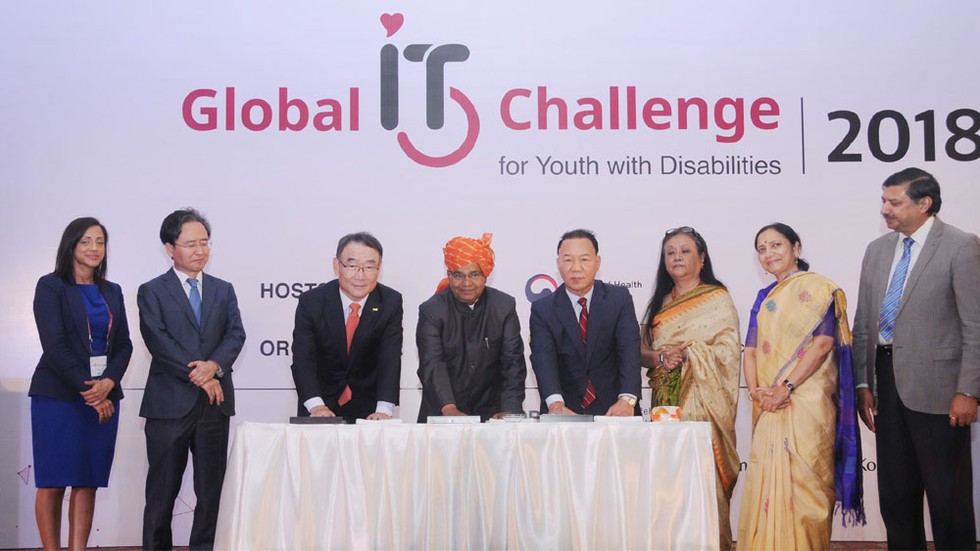
About Global ICT Challenge for Youth with Disabilities:
- Organized by: Department of Empowerment of Persons with Disabilities (DEPwD), Ministry of Social Justice and Empowerment in association with Rehabilitation International Korea.
- Objective: To leverage IT skills among youth with disabilities and also to spread awareness about the application of Information and Computer Technology (ICT) in enhancing the quality of life of persons with disabilities especially in Asia-Pacific region.
- Event duration: It was held from 9th to 11th November, 2018.
- Event details:
- This year 96 youth with disabilities from 18 countries participated in the event.
- The event comprised of 55 awards in various categories i.e. visual, hearing, physical and developmental/intellectual disability.
- This year 96 youth with disabilities from 18 countries participated in the event.
- India has been participating in the event since 2013.
- Last year the event was held in Vietnam.
Prelims Pointers
Nov. 12, 2018

About:
- ASEAN stands for the Association of Southeast Asian Nations.
- Objective:
- It is a political and economic union of 10 Asian countries aimed at promoting the economic growth, political stability of individual countries, and regional stability among its members.
- Apart from economic and political growth it also focuses on social progress, social-cultural evolution among member countries, and provision of mechanisms and strategies to resolve differences peacefully.
- It is a political and economic union of 10 Asian countries aimed at promoting the economic growth, political stability of individual countries, and regional stability among its members.
- History:
- It was formed in 1967, by Thailand, Singapore, Philippines, Malaysia, and Indonesia.
- Membership has been extended to include Vietnam, Burma, Laos, Cambodia, and Brunei.
- It was formed in 1967, by Thailand, Singapore, Philippines, Malaysia, and Indonesia.
- Secretariat: Jakartaa, Indonesia.
Prelims Pointers
Nov. 12, 2018

Security Council Subsidiary Bodies:
- Article 29 of the United Nations Charter sets out that the Security Council may establish subsidiary bodies (committees or working groups) as needed for the performance of its functions.
- Mandate: The mandate of subsidiary organs can range from procedural matters (e.g. documentation and procedures) to substantive issues (e.g. sanctions regimes, counter-terrorism, peacekeeping operations).
- Composition:
- All subsidiary bodies are comprised of the 15 members of the Council.
- While standing committees are chaired by the President of the Council other subsidiary bodies are chaired or co-chaired by designated members of the Council.
- All subsidiary bodies are comprised of the 15 members of the Council.
- Types of subsidiary bodies:
- Committees: Counter-Terrorism Committee, Sanctions Committees, Standing Committees and Ad Hoc Bodies
- Peacekeeping Operations and Political Missions
- International Courts and Tribunals
- Advisory Body: The Peacebuilding Commission (PBC) is an Advisory Subsidiary Body of both the Security Council and the General Assembly.
- Committees: Counter-Terrorism Committee, Sanctions Committees, Standing Committees and Ad Hoc Bodies
Sanctions Committees:
- The use of mandatory sanctions is intended to apply pressure on a State or entity to comply with the objectives set by the Security Council without resorting to the use of force.
- The range of sanctions has included comprehensive economic and trade sanctions and/or more targeted measures such as arms embargoes, travel bans, financial or diplomatic restrictions.
Criticism by India:
- India has criticised the UNSC's Sanctions Committees, saying they lack accountability and never inform the reason for not acceding to requests for sanctioning terrorists.
- India's criticism is in an apparent reference to China repeatedly blocking India’s bid to list Pakistan-based JeM chief Masood Azhar as a global terrorist.
Prelims Pointers
Nov. 12, 2018

About:
- The day is observed every year to commemorate the first and last visit of Mahatma Gandhi to the studio of All India Radio, Delhi in 1947.
- He addressed the displaced people, who had temporarily settled at Kurukshetra in Haryana after partition.
Prelims Pointers
Nov. 12, 2018
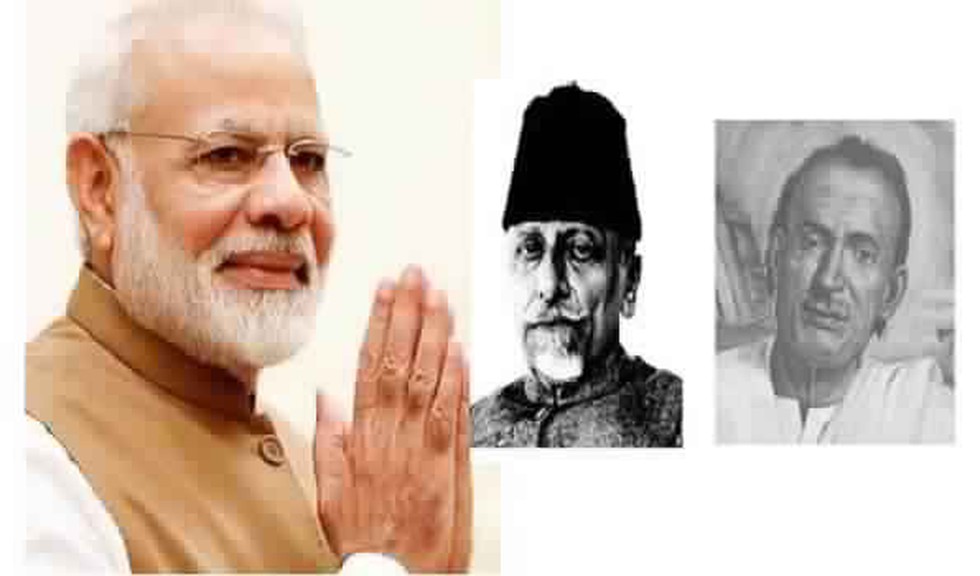
About:
- Jivatram Bhagwandas Kripalani (1888 – 1982), popularly known as Acharya Kripalani, was an independence activist, Indian politician and an Educationist.
- Educationist:
- Kripalani was also well-known for his work in the field of education. From 1912 to 1927, he taught at various places before becoming wholly involved in freedom movement.
- He earned the moniker ‘Acharya’ around 1922 when he was teaching at the Gujarat Vidyapith, founded by the Mahatma a couple of years before.
- Kripalani was also well-known for his work in the field of education. From 1912 to 1927, he taught at various places before becoming wholly involved in freedom movement.
- Independence Activist:
- He was involved in the organization of Non-Cooperation Movement and the Civil Disobedience movements and Quit India Movement.
- He was the President of Indian National Congress (INC) at the time of independence.
- He served in the Interim government of India (1946–1947) and the Constituent Assembly of India.
- He was involved in the organization of Non-Cooperation Movement and the Civil Disobedience movements and Quit India Movement.
- Political Career: Post-independent India
- Post-independence, he left the Congress and became one of the founders of the Kisan Mazdoor Praja Party (KMPP). This party subsequently merged with the Socialist Party of India to form the Praja Socialist Party (PSP).
- He remained in opposition for the rest of his life and was elected to the Lok Sabha in 1952, 1957, 1963 and 1967 as a member of Praja Socialist Party.
- Kripalani moved the first-ever No confidence motion in Lok Sabha in 1963, immediately after the India-China War.
- He remained a critic of Nehru's policies and Indira Gandhi’s authoritarian rule. He was arrested during Emergency.
- Post-independence, he left the Congress and became one of the founders of the Kisan Mazdoor Praja Party (KMPP). This party subsequently merged with the Socialist Party of India to form the Praja Socialist Party (PSP).
- Environmentalist: He along with Vinoba Bhave, was involved in in preservation and conservation activities throughout the 1970s.
- Personal life: He was married to Sucheta Kripalani, India’s first woman Chief Minister, who led Uttar Pradesh from 1963 to 1967. She remained in Congress after Independence.
- His autobiography ‘My Times’ was released 22 years after his death in 2004.
Nov. 11, 2018
Prelims Pointers
Nov. 11, 2018
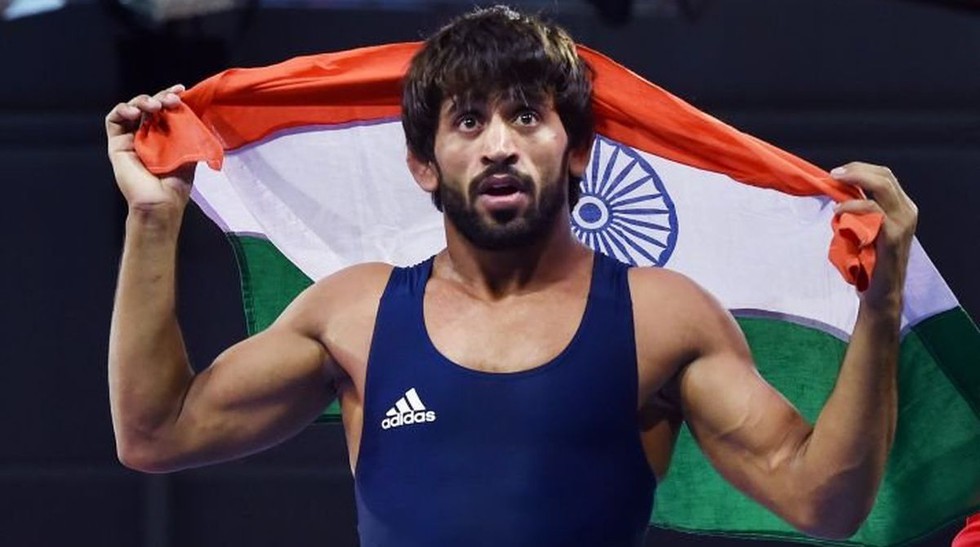
Bajrang Punia:
- Bajrang Punia is a freestyle wrestler from Haryana, India.
- He is a recipient of Arjuna Award (2015).
- He Bajrang was placed atop the ranking table with 96 points in the 65kg category in the United World Wrestling (UWW) list. He recently won gold medal at Common Wealth Games (2018 Gold Coast) and the Asian Games (2018 Jakarta).
|
United World Wrestling (UWW)? · UWW is the international governing body for the sport of amateur wrestling. Its duties include overseeing wrestling at the Olympics. · It was established in 1912 and is Headquartered in Switzerland. |
Prelims Pointers
Nov. 11, 2018

About:
- Tissue chips, also known as Organs on chips or a micro-physiological system.
- It is a small device (about the size of a thumb drive) that contains human cells in a 3D matrix.
- Properties: A tissue chip needs three main properties –
- It has to be 3D, because humans are 3D
- It must have multiple, different types of cells, because an organ is made up of all kinds of tissue types.
- It must have microfluidic channels, because every single tissue in body has vasculature to bring in blood and nutrients and to take away detritus.
- It has to be 3D, because humans are 3D
- NCATS at the National Institutes for Health (NIH) and the Centre for the Advancement of Science in Space (CASIS) in partnership with NASA are planning to test tissue chips in microgravity aboard the International Space Station (ISS).
- The initiative seeks to better understand the role of microgravity on human health and disease and to translate that understanding to improved human health on Earth.
- It is because Many of the changes in the human body caused by microgravity resemble the onset and progression of diseases associated with aging on Earth, such as bone and muscle loss.
- A potential application of tissue chips is in development of new drugs.
Prelims Pointers
Nov. 11, 2018

About:
- Background: The fund was setup in the year 1962.
- Objective: The Fund is used for the welfare of the members of the Armed Forces (including Para Military Forces) and their dependents.
- Type of funding: The fund is entirely dependent on voluntary contributions from the public and does not get any budgetary support.
- Administration:
- It is administered by an Executive Committee, with PM as Chairperson, and Defence, Finance and Home Ministers as Members.
- Finance Minister is the Treasurer of the Fund.
- The Joint Secretary, PMO is Secretary of the Executive Committee.
- Accounts of the Fund are kept with the Reserve Bank of India (RBI).
- It is administered by an Executive Committee, with PM as Chairperson, and Defence, Finance and Home Ministers as Members.
PM Scholarship Scheme under the NDF:
- Background: ‘Prime Minister’s Scholarship Scheme’ was introduced by Government of India w.e.f. Academic year 2006-2007.
- Funding: The scholarship is paid out of the National Defence Fund (NDF).
- Objective: To encourage higher, technical and professional education for the widows and wards of the deceased personnel of Armed Forces and Para Military Forces is being implemented.
- Implementing agencies:
|
Type of force |
Implementing ministry |
|
For Armed forces |
Department of Ex-Servicemen Welfare, Ministry of Defence |
|
For Paramilitary Forces |
Ministry of Home Affairs |
|
For Railway Protection force (RPF) |
Ministry of Railways |
Prelims Pointers
Nov. 11, 2018
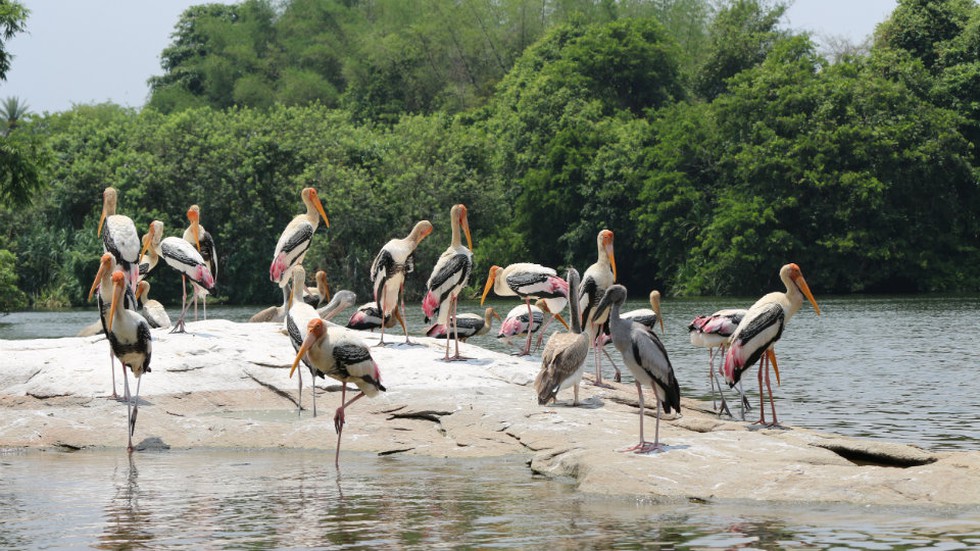
About:
- Location: The Ranganathittu Bird Sanctuary is located in the Mandya District, Karnataka. It is situated on the banks of river Cauvery nearly 4 Kms. away from the historic town of Srirangapatna and 19 Kms. from Mysore.
- It is the largest bird sanctuary in Karnataka. It was declared a wildlife sanctuary in 1940 due to efforts of the ornithologist Salim Ali.
- It is named after the Hindu God Sri Ranganatha Swamy, who is considered an incarnation of Lord Vishnu.
Prelims Pointers
Nov. 11, 2018

About:
- The wildlife sanctuary is located along the Palk Strait where it meets the Bay of Bengal at Point Calimere in Nagapattinam district of Tamil Nadu.
- It spreads across an area of 30 sq.km and comprises sandy coastal, saline swamps and thorn scrub forests around the backwater. It is famous for large congregations of waterbirds, especially greater flamingos.
- The sanctuary was created in 1967 for conservation of the near threatened blackbuck antelope.
- it has been designated as a Ramsar site.
Prelims Pointers
Nov. 11, 2018
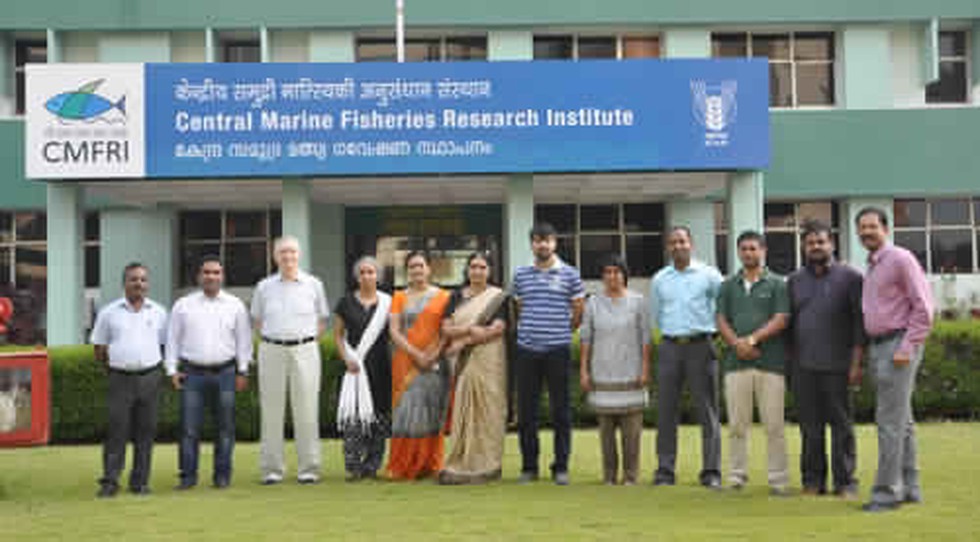
About:
- CMFRI is the largest marine fisheries research institute in India.
- Established in:
- Headquarter: Kochi, Kerala.
- Parent Body: Indian Council of Agricultural Research (ICAR).
- CMFRI has developed a unique method for estimation of fishery catch called the "Stratified Multistage Random Sampling Method”. With this methodology the Institute is maintaining the National Marine Fisheries Data Centre (NMFDC).
Prelims Pointers
Nov. 11, 2018

About:
- A team of researchers from IIT Gandhinagar have analysed groundwater depletion based on Central Ground Water Board (CGWB) data of nearly 5,900 wells which have long-term data (1996–2016).
- The results were published in American Geophysical Union’s journal Earth’s Future.
Key findings:
- Many parts of the country are experiencing rapid depletion of groundwater. The total estimated groundwater depletion in India is in the range of 122–199 billion metre cubes.
- The Indo-Gangetic Plain, north-western, central and western parts of India account for most intensive groundwater-based irrigation.
- With depletion occurring at a rate of 91 cm per year, Punjab has been witnessing a steep decline in groundwater table since 1996.
- In contrast, some districts in western India, east coast and peninsular India have witnessed an increase in groundwater levels.
- Groundwater recharge has declined between 1996 and 2016 in northwest and northcentral India due a reduction in ‘low-intensity rainfall’ during the monsoon.
- Using groundwater to irrigate the field only when necessary led to a reduction in electricity consumption and greenhouse emissions.
- Implications:
- If groundwater is depleted and the region experiences drought for two–three years consecutively, then even Availability of drinking water can be a huge problem.
- Natural recharge during monsoon may not help much if groundwater depletion becomes acute.
- If groundwater is depleted and the region experiences drought for two–three years consecutively, then even Availability of drinking water can be a huge problem.
Prelims Pointers
Nov. 11, 2018

Monogenic diabetes:
- Monogenic diabetes is a rare type of diabetes that’s caused by a single gene mutation.
- Monogenic diabetes vs Type 1 and Type 2 diabetes:
- Monogenic diabetes has characteristics of both Type 1 and Type 2, and is often misdiagnosed as one of those more common types.
- While Monogenic diabetes results from mutations (changes) in a single gene, the type 1 and type 2 diabetes are caused by multiple genes.
- Monogenic diabetes has characteristics of both Type 1 and Type 2, and is often misdiagnosed as one of those more common types.
- Forms: There are two main forms of Monogenic diabetes –
- Neonatal diabetes is usually diagnosed in infants from birth to 6 months, though diagnosis may occur later in some cases.
- MODY (Maturity Onset Diabetes of the Young) is usually diagnosed in late childhood to adulthood.
- Neonatal diabetes is usually diagnosed in infants from birth to 6 months, though diagnosis may occur later in some cases.
- Treatment: Treatment can vary, depending on the particular gene involved. People with this diabetes are usually very insulin sensitive and use smaller than typical doses of insulin.
National Monogenic Diabetes Study Group:
- Mandate: It’s mandate is to identify cases of monogenic diabetes across the country. Under this initiative, MDRF would provide guidelines to the collaborators for identifying monogenic diabetes.
- Agencies involved: It is supported by the Indian Council of Medical Research (ICMR), the Madras Diabetes Research Foundation (MDRF) and Dr. Mohan’s Diabetes Specialities Centre (DMDSC) will be the national coordinating centre for the study group.
Prelims Pointers
Nov. 11, 2018
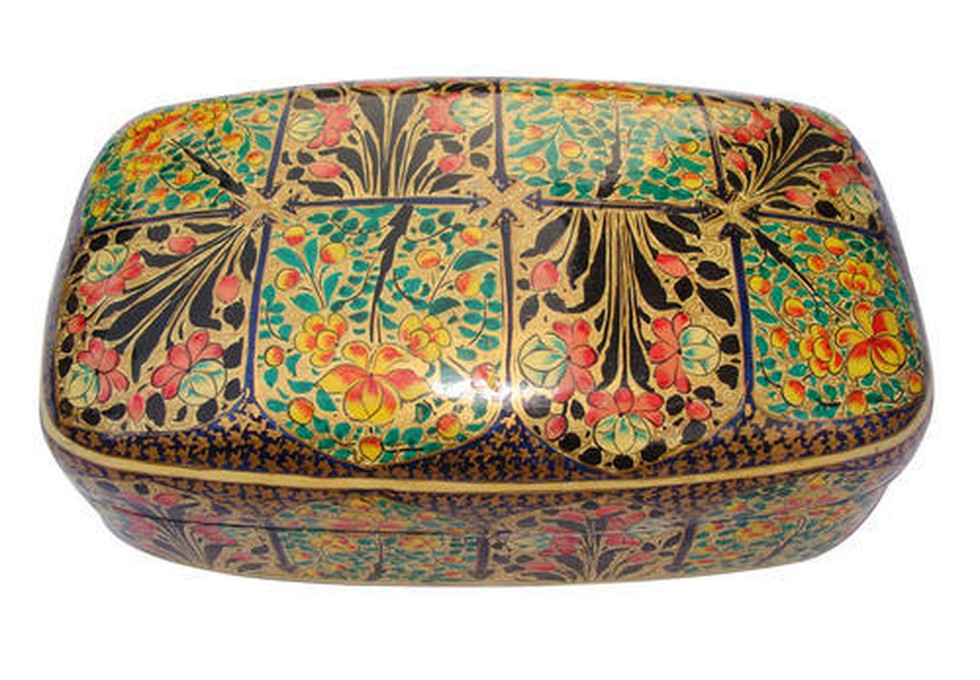
About:
- Papier Mache or Paper Mache is derived from French meaning 'chewed Paper'.
- Papier Mache is a composite material consisting of paper pulp reinforced with some adhesive which hardens upon drying and then is painted upon. The products created are generally in the form of vases, bowls boxes, trays and many other small objects.
- Procedure: Making a Paper Mache product involves two procedures
|
Sakhtsazi (Making the base product from the pulp of paper into the desired form) |
· The process begins with soaking waste paper in water for days till it disintegrates and then mixing it with cloth, paddy straw and copper sulphate to form pulp. · The pulp is put into moulds and given shape and form. It is polished smooth with stone or baked clay and pasted with layers of tissue paper. |
|
Naqashi (The painting process done over it) |
· After applying a base colour, the artisan draws a design. The object is then sandpapered or burnished and is finally painted with several coats of lacquer. |
- Government initiatives for promoting it:
- The craft is protected under the Geographic Indication Act 1999.
- In 2016, government introduced the craft in the Nawakadal girls’ college in Srinagar.
- The craft is protected under the Geographic Indication Act 1999.
- According to Historians, the Shia community of Kashmir is keeping alive the papier mache art in the Valley since the 14th Mughal kings, were fond of this art and were its patrons.
Prelims Pointers
Nov. 11, 2018

About:
- The land in Villers-Guislain was donated by the French government to the Government of India for constructing a memorial recognising the sacrifices of Indian soldiers during the Battle of Cambrai in 1917. Over 40,000 soldiers had died during that battle, including many Indians.
- It was inaugurated by the Vice-President of India during his visit to Paris to attend the centenary year of the end of World War I.
- This is the first such memorial built by the Government of India in France.
- Nearly 1,40,000 Indian Soldiers took part in World War 1 in France and Belgium. 9,300 of them were killed and are buried in 168 cemeteries in France and Belgium.

